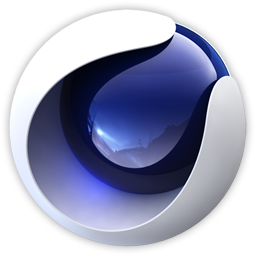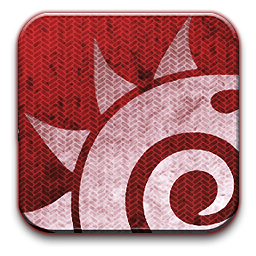The RenderMan Interface Specification, or RISpec in short, is an open API developed by Pixar Animation Studios to describe three-dimensional scenes and turn them into digital photorealistic images. It includes the RenderMan Shading Language.
Autodesk 3ds Max, formerly 3D Studio and 3D Studio Max, is a professional 3D computer graphics program for making 3D animations, models, games and images. It is developed and produced by Autodesk Media and Entertainment. It has modeling capabilities and a flexible plugin architecture and must be used on the Microsoft Windows platform. It is frequently used by video game developers, many TV commercial studios, and architectural visualization studios. It is also used for movie effects and movie pre-visualization. 3ds Max features shaders, dynamic simulation, particle systems, radiosity, normal map creation and rendering, global illumination, a customizable user interface, and its own scripting language.

Cinema 4D is a 3D software suite developed by the German company Maxon.

LightWave 3D is a 3D computer graphics program developed by LightWave Digital. It has been used in films, television, motion graphics, digital matte painting, visual effects, video game development, product design, architectural visualizations, virtual production, music videos, pre-visualizations and advertising.

Wings 3D is a free and open-source subdivision modeler inspired by Nendo and Mirai from Izware. Wings 3D is named after the winged-edge data structure it uses internally to store coordinate and adjacency data, and is commonly referred to by its users simply as Wings.

Houdini is a 3D animation software application developed by Toronto-based SideFX, who adapted it from the PRISMS suite of procedural generation software tools.
The Advanced Visualizer (TAV), a 3D graphics software package, was the flagship product of Wavefront Technologies from the 1980s until the 1990s.
Aladdin4D is a computer program for modeling and rendering three-dimensional graphics and animations, currently running on AmigaOS and macOS platforms. A-EON Technology Ltd owns the rights and develops current and future versions of Aladdin4D for AmigaOS, MorphOS & AROS. All other platforms including macOS, iPadOS, iOS, Linux & Windows are developed by DiscreetFX.

Pixologic ZBrush is a digital sculpting tool that combines 3D/2.5D modeling, texturing and painting. It uses a proprietary "pixol" technology which stores lighting, color, material, orientation and depth information for the points making up all objects on the screen. The main difference between ZBrush and more traditional modeling packages is that it is more akin to traditional sculpting.
Strata Design 3D CX is a commercial 3D modeling, rendering and animation program developed in St. George, Utah by Corastar, Inc. dba Strata Software as the successor to StrataVision 3D. It is an all-purpose 3D modeling application targeted at the illustration/multimedia market.

Vue is a software tool for world generation by e-on software with support for many visual effects, animations and various other features. The tool has been used in several feature-length movies.

3D computer graphics, sometimes called CGI, 3-D-CGI or three-dimensional computer graphics, are graphics that use a three-dimensional representation of geometric data that is stored in the computer for the purposes of performing calculations and rendering digital images, usually 2D images but sometimes 3D images. The resulting images may be stored for viewing later or displayed in real time.

Softimage|3D was a high-end 3D graphics application developed by Softimage, Co., which was used predominantly in the film, broadcasting, gaming, and advertising industries for the production of 3D animation. It was superseded by Softimage XSI in 2000.

Computer graphics deals with generating images and art with the aid of computers. Today, computer graphics is a core technology in digital photography, film, video games, digital art, cell phone and computer displays, and many specialized applications. A great deal of specialized hardware and software has been developed, with the displays of most devices being driven by computer graphics hardware. It is a vast and recently developed area of computer science. The phrase was coined in 1960 by computer graphics researchers Verne Hudson and William Fetter of Boeing. It is often abbreviated as CG, or typically in the context of film as computer generated imagery (CGI). The non-artistic aspects of computer graphics are the subject of computer science research.
3D computer graphics software refers to programs used to create 3D computer-generated imagery.
Maxwell Render is an unbiased 3D render engine, developed by Next Limit Technologies in Madrid, Spain. This stand-alone software is used in the film, animation, and VFX industry, as well as in architectural and product design visualization. It offers various plug-ins for 3D/CAD and post production applications.
iClone is a real-time 3D animation and rendering software program. Real-time playback is enabled by using a 3D videogame engine for instant on-screen rendering.
Alembic is an interchangeable computer graphics file format developed by Sony Pictures Imageworks and Industrial Light & Magic. It was announced at SIGGRAPH 2011, and has been widely adopted across the industry by visual effects and animation professionals.

Art of Illusion is a free software, and open source software package for making 3D graphics.






